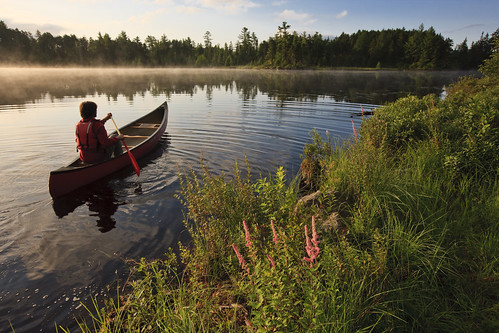
Across our 175 national forests and grasslands, we provide American people and visitors from across the world opportunities for both adventure and solitude.
Conservation of our nation’s natural resources is at the heart of USDA’s mission. Our work on public and private lands supports clean air, clean water, and thriving wildlife habitat. These conservation efforts strengthen rural economies by providing farmers and ranchers the resources they need to thrive and feed our nation. And this conservation allows us to support gateway communities and a robust recreation economy.
USDA’s management of our national forests and our support for farmers’ and ranchers’ stewardship of private working lands helps us meet our moral obligation to the next generation to leave our land, water, and wildlife better than we found it.
It’s an exciting time for conservation, and this month, we’ll focus our story on our collaborative efforts that will ensure our national forests and private working lands are conserved, restored, and made more resilient to climate change.
Today, USDA is focused more than ever before on partner-based solutions to drive our conservation efforts. NRCS is calling on farmers, ranchers, partner organizations, and local government to drive our Farm Bill investments through the innovative Regional Conservation Partnership Program, or RCPP. Earlier this year, we announced 115 partner-driven projects in which we’ll invest more than $370 million, which is being matched by our partners. These projects enable tribes, landowners, and an array of conservation partners improve soil health, water quality and efficiency, wildlife habitat, and other resource concerns. We’ve just finished reviewing our second round of preproposals, and are excited by our partners’ continued commitment to leading the way.
These partnership efforts are helping USDA drive solutions that work for sportsmen, producers, wildlife, and local communities. NRCS and the Forest Service are leading the way in efforts to foster landscape-level conservation, and our sage-grouse efforts are a great example. Last month, Secretary Vilsack announced a long-term strategy for NRCS’s investments in sage-grouse efforts on private lands through the Sage Grouse Initiatives; efforts that have already helped 1,129 ranchers conserve and restore 4.4 million acres of sage-grouse habitat. At the same time, the Forest Service has been developing forest plans that support healthy sagebrush ecosystems as part of its multiple-use mandate.
Our legacy will be to restore lands stressed by climate change, drought and fire. Climate change has led to fire seasons that are longer and more severe. The cost of fighting these fires, largely borne by the Forest Service, is straining its budget and dramatically impacting its ability to devote resources to restoration, recreation and watershed protection efforts, many of which can actually help mitigate the stresses of climate change, drought and fire. The devastating impacts of short- and long-term drought are hampering agricultural operations and threatening habitat. In the face of these challenges, we are working with farmers and ranchers to make their operations more resilient through soil health and water conservation practices, and working with communities to restore their forest and meadows to ensure downstream water quality and quantity.
Across our 175 national forests and grasslands, we provide American people and visitors from across the world opportunities for both adventure and solitude, laboratories to teach children about the wonders of nature and the campgrounds for families to bond. Our national forests support a vibrant recreation economy that supports hundreds of thousands of jobs across urban and rural America and enhancing access to these lands is a priority that will ensure that generations to come can experience the great outdoors.
In addition, this year we are celebrating the 30th anniversary of the Conservation Reserve Program (CRP). This federally-funded voluntary program contracts with agricultural producers so that environmentally-sensitive land is not farmed or ranched, but instead used for conservation benefits. The program reached a major milestone this year when USDA announced that the number of acres conserved reached the one million mark. The efforts produced by CRP partners prevents more than 8 billion tons of soil from eroding, reduces nitrogen and phosphorous runoff relative to cropland by 95 and 85 percent respectively, and even sequesters 43 million tons of greenhouse gases annually, equal to taking 8 million cars off the road.
And through our work in quantifying the environmental benefits of conservation–like clean water and air, flood prevention, healthy soils, and wildlife habitat–we’re leading the way in supporting environmental markets that can sell or trade those benefits, providing yet another opportunity for people to put conservation on the ground. These markets are proof positive that the conservation efforts we support make financial sense, and through innovative efforts like the NRCS Conservation Innovation Grant program, we’re helping develop of many of the nation’s leading environmental markets for water quality and carbon.
USDA has a significant role to play in protecting our air and water, restoring and conserving habitat for wildlife, fostering strong and resilient farming and ranching operations, and supporting thriving recreation and agricultural economies. We take this responsibility seriously, and in the face of climate change and urbanization, are committed to conserving our resources to support thriving landscapes and robust agriculture for present and future generations. We look forward to sharing some of these stories with you this month.

Today, USDA is focused more than ever before on partner-based solutions to drive our conservation efforts.
No comments:
Post a Comment
Note: Only a member of this blog may post a comment.